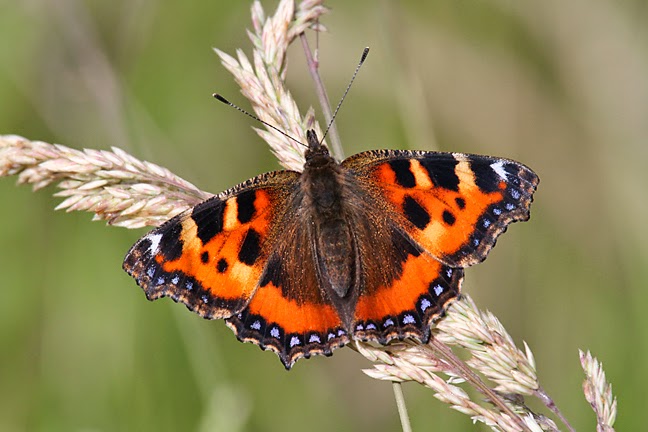A little while ago I wrote about the Peregrinations of MCAV, well the data logger fitted to this LBB Gull has revealed its movements during the winter period of 2013/14. Kees Camphuysen has kindly forwarded me the information, so I thought I should share it as it is really interesting. I will follow this post with one about another LBB Gull from the Netherlands, which has a satellite tracker fitted and that one migrated south.
Lesser Black-backed Gull MCAV has re-appeared in the breeding colony where its data logger was fitted. Kees reports that MCAV is now established in the colony and is territorial with a partner. The base station is close to the colony, so the data held by the logger was automatically downloaded as soon as MCAV arrived back.
The information confirms my sightings of it at Shawell on March 12th & 13th 2014. The maps below show its wanderings, firstly to Britain and then to the Shawell A5 Lagoons, Cotesbach LF site, Draycote Water and finally Albion LF site (NW Leicestershire).
Lesser Black-backed Gull MCAV has re-appeared in the breeding colony where its data logger was fitted. Kees reports that MCAV is now established in the colony and is territorial with a partner. The base station is close to the colony, so the data held by the logger was automatically downloaded as soon as MCAV arrived back.
The information confirms my sightings of it at Shawell on March 12th & 13th 2014. The maps below show its wanderings, firstly to Britain and then to the Shawell A5 Lagoons, Cotesbach LF site, Draycote Water and finally Albion LF site (NW Leicestershire).
 |
| The Wanderings of LBB Gull MCAV During Winter 2013/14 MCAV at Shawell A5 Lagoons on March 12th & 13th 2014 |
MCAV at Cotesbach LF March 12th & 13th 2014
MCAV Roosting at Draycote During Winter 2013/14
The red dot nearest the top on the map above was where it roosted on March 12th 2014, the same day as I first recorded it at Shawell.
MCAV at Albert Village Lake and Albion LF Site During the winter of 2013/14
Thank-you to Kees Camphuysen for providing me with the data and allowing me to reproduce it here.
MCAV Showing the Data Logger (photo taken by CJ Camphuysen)











































































